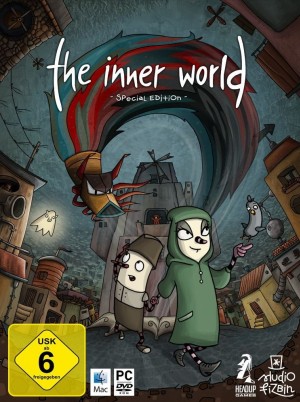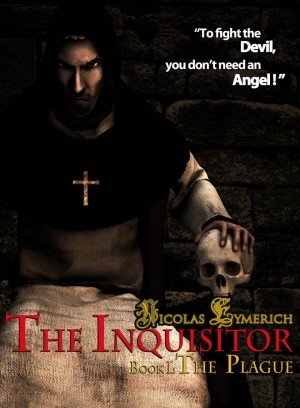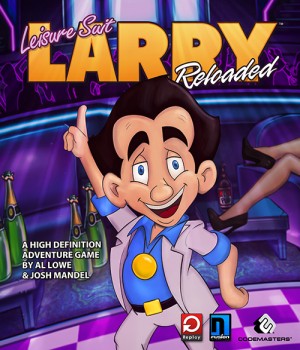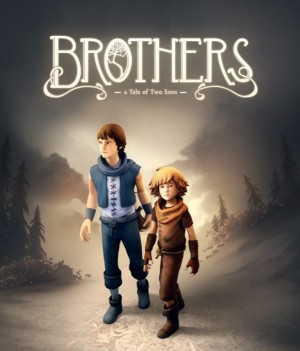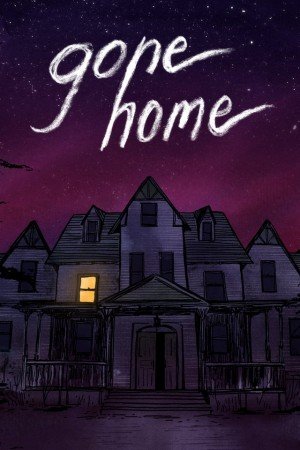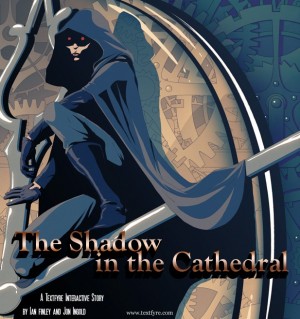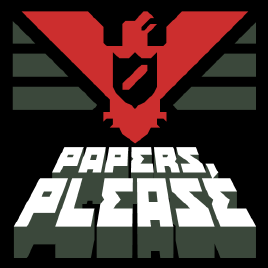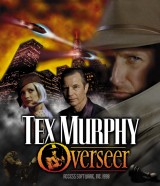Review for The Inner World
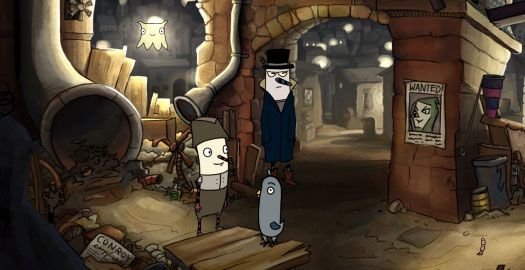
Big things can sometimes come in unassuming packages, and not all adventures have to feature innovative control schemes or frightening scare tactics. There is still plenty of room for traditional point-and-click games that impress by doing what’s been done so often before, but doing it very well. The Inner World is that kind of game: a classic adventure whose hand-drawn, cartoony art style will appeal to young gamers, but whose humor, story, and puzzles will keep even veterans of the genre entertained as well. In short, it’s a game that the entire family can truly enjoy together.
Speaking of big things in small packages, little Robert is a novice at the Wind Temple of Asposia and court musician to Abbott Conroy, its resident wind monk. Robert has spent his whole life sheltered under the watchful eye of Conroy, unaware of the dire straits his world finds itself in. You see, Asposia is a world within a world, surrounded on all sides by rock. Wind inexplicably entering through the three wind fountains has become the hidden world’s life force; without it there's no light, and industry, trade, even Asposia’s very existence would come to a grinding halt.
And wind is exactly what’s running out. Years ago, the Basylians – angry wind gods who control the wind fountains – became displeased with the Asposians, and since then they’ve been on a rampage, petrifying all they gaze upon while the wind fountains slowly dry up. Robert isn’t the kind of hero to set out on a grand quest to save his world. Rather, he begins merely by chasing a thieving pigeon into a dirty, trash-choked back alley. Before long, he meets the charismatic Laura, a girl searching for her missing father. Following the cryptic clues he left behind for her, Laura not only believes that her father is still alive somewhere, but that he holds the key to discovering a secret wind fountain. Initially an unwilling participant, Robert is pulled into a tale of civil unrest in his own coming-of-age adventure. And if he plays his cards right, he just might learn how to save the world and impress the girl in the process.
Studio Fizbin, newcomer to the adventure scene, has crafted a charming, player-friendly experience. The game sports high presentation values, chiefly in its hand-drawn animation resembling Saturday morning TV cartoons. It eschews realism for a stylized fantasy world filled with creatures that draw their inspiration straight from a child’s storybook. Most resemble crosses between two animals, like the tumble mice that look like miniature-sized sheep, or the monkey-like wooloofs. Even the Asposians themselves sport an imaginative look, their distinguishing feature a striped, pointed nose – all but Robert, whose nose is plain and lined with holes, allowing him to play it like a flute. Playing as Robert, you’ll have a chance to explore the throne room of Conroy’s castle, brave the dangers of a trap-laden root forest, find an underground laboratory, and uncover the secret of the lost wind fountain.
Along with the clean, colorful art style comes painless navigation and an easy-to-use inventory system. Mousing over an object brings up clickable options, generally things like “Look”, “Take” or “Talk to”. The inventory, popping up when the cursor approaches the bottom of the screen, is unobtrusive; click and drag an item where you’d like to use it, or onto another object to combine them. Items in your inventory, as well as possible dialog options during conversations, are visually represented by button-like picture icons. Holding the mouse button down will cause all on-screen hotspots to appear, avoiding the need for pixel hunting and making it a snap to find any vital items you may have missed previously.
The audio is equally pleasant, with a catchy title theme that perfectly fits the fantastical world, followed by equally good music throughout the game. Voice acting, however, is more of a mixed bag. Most characters sound fine, like Abbott Conroy’s gruff, authoritative baritone and the plucky, rebellious attitude of Laura, Robert's partner in stirring up civil unrest – wanted for such crimes as chewing gum in public. Several minor characters also work flawlessly, and the narrator’s smooth solemnity was a great choice. On the other hand, a few characters get decidedly too much game-time, their voices grating on the nerves, like Detze, a little boy with the painfully obvious adult male falsetto. The most unfortunate voiceover comes from Robert himself; while his flaccid, wispy lack of authority seems fitting at first, it quickly becomes tedious as even describing objects in the environment sounds like an overwhelming task for him.
Originally developed in German, the localization from one language to another does raise some minor concerns. Several times the translation is noticeably wonky, resulting in a few lines of spoken dialog that are simply grammatically incorrect (“I wonder why they search the girl”, instead of “search for”) and some misnamed items in the environment (a "pillow" instead of a "box"). Another time, a close-up insert providing important clues for a puzzle still showed bits and pieces of the original German text around its borders. Fortunately, these are entirely cosmetic and do not affect the gameplay, as the humor has been kept intact, even managing to include sly bits of innuendo and even contextual wordplay.
Perhaps one of the only turn-offs of the game (though some may also view this as a positive) is the sheer amount of dialog to slog through. Not that there are walls of text, but most dialog options require upwards of three or four separate clicks to exhaust completely. Most of these conversations deliver a bit of comedy, fill in some backstory, or simply offer some light-hearted flavor. But anyone who would like to get to the point without starting the same conversation four separate times may get impatient. For example, in order to get a vital inventory item early in the game, you must initiate the same conversation topic with the same character three separate times – while this initiates a funny moment of the two haggling with each other, similar requirements can become rather long-winded later in the game.
The Inner World's gameplay does not attempt any innovation, relying instead on the tried-and-true, point-and-click formula. However, the complexity of the inventory puzzles ramps up quite significantly after the first chapter or two, providing a gentle learning curve early on but keeping things challenging in later chapters. Even with their increased difficulty, the puzzles remain logical, and can always be solved with a minimum of trial and error.
For those stuck on a section, the need for consulting a walkthrough has been virtually eliminated as the game features a built-in hint system that can be accessed without penalty. Hints are categorized into currently available tasks, and each task may have upwards of a dozen individual hints. In this way, spoilers are minimized – if you simply require a nudge and prefer to figure things out from there, the game’s got you covered. Should you want a full “Go here, do this” directive, clicking through all available hints will display the full solution for you.
I quite enjoyed the creativity the designers employed in implementing the puzzles. In one scene it becomes clear that Robert needs to bake something. A recipe is easily procured, but finding an oven, making it work, and gathering suitable ingredients (without anything even resembling a kitchen nearby) proves to be quite a bit more challenging, involving a solution spread out over various screens, gathering and using other items in unconventional ways in order to finally succeed. Of course, without staples such as flour or sugar, one truly has to think outside the box to make this work.
Though each chapter consists of no more than a handful of locations (around four or five), there are a surprising number of tasks in each segment that must be accomplished before proceeding. Each area typically has a clear goal to accomplish, apparent from the beginning of the chapter, whether unlocking a specific door, retrieving a valuable item, or stopping a piece of machinery. Very few situations, however, have a quick solution. If anything, it feels overwhelming on occasion trying to figure out where to begin sorting through the mess of tasks at hand; sometimes simply discovering what obstacle I was supposed to overcome was enough to set me on the path to resolving it. This was the only time I was ever forced to resort to the hint system.
While The Inner World looks like a game for children, there are a few moments that clearly have a different demographic in mind. Early in the game, Robert runs into a salacious barkeeper, who, in addition to giving him free drinks and offering to explain what a garter is, makes his sheltered ears burn by whispering about the sinful secrets of her sordid past. Later in the game, two female characters enter into a verbal catfight with each other, and a number of obscenities are exchanged. It’s not much in the way of mature content, but it’s likely more than some would expect based on the game's childlike appearance.
Overall, The Inner World is a stylish old-school, point-and-click adventure, and savoring the world and all its little details should provide between 6-8 hours of play time. It doesn’t break any new ground – nor does it ever seek to – but what it does it does well. Puzzles are a highlight, advancing in complexity from simple to vexing, and the world itself is sure to become a favorite locale to many who visit it. Warm and colorful, the characters have a way of growing on you, and even some spotty voice acting proves more of an annoyance than a game breaker. If games steeped in darkness and shadows are your thing, or if you’re looking for a fast-paced thrill ride, you'll have to look elsewhere. But if a leisurely coming-of-age tale with a bit of humor for the whole family sounds good, you may well want to take the trip to Asposia. You're very likely to enjoy your stay, and that's not just a lot of hot air.
WHERE CAN I DOWNLOAD The Inner World
The Inner World is available at:
- GOG -90%
- HumbleBundle
- Amazon


